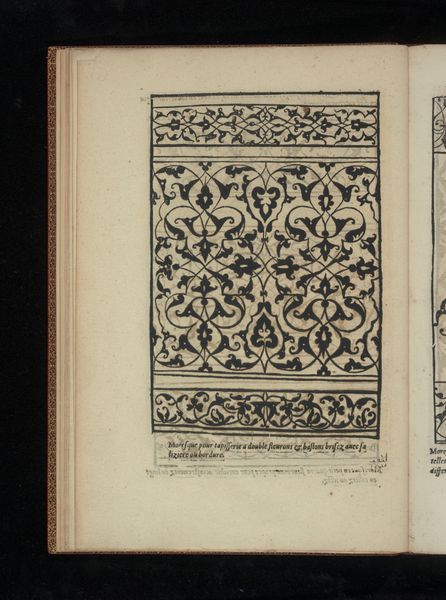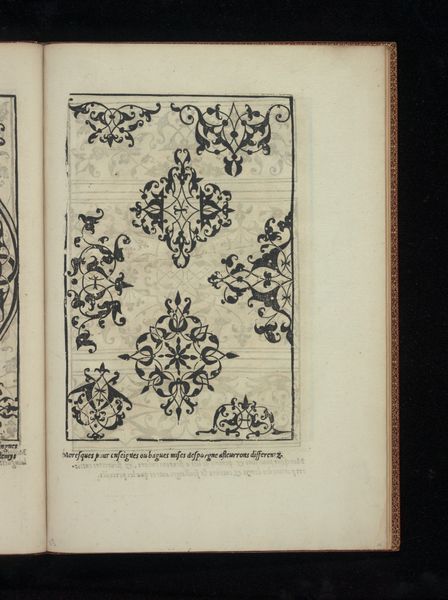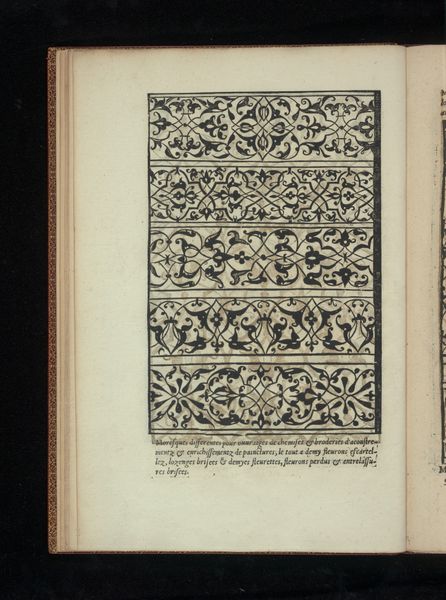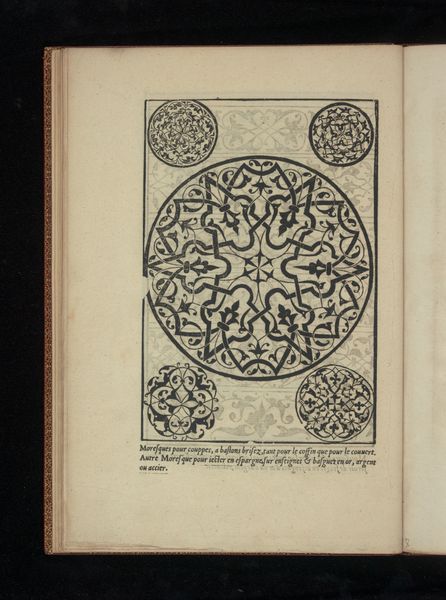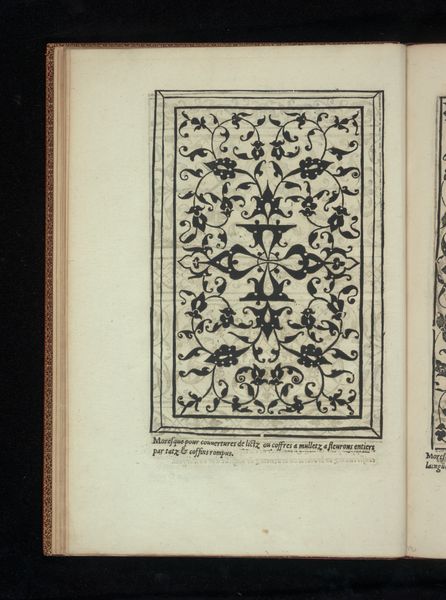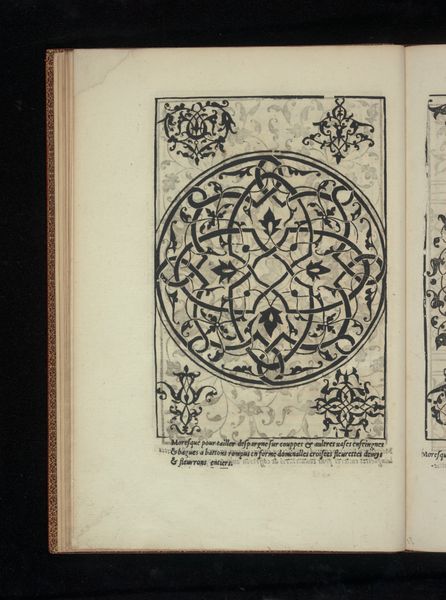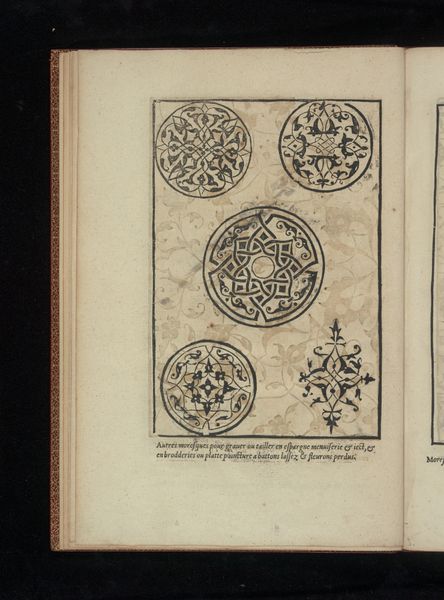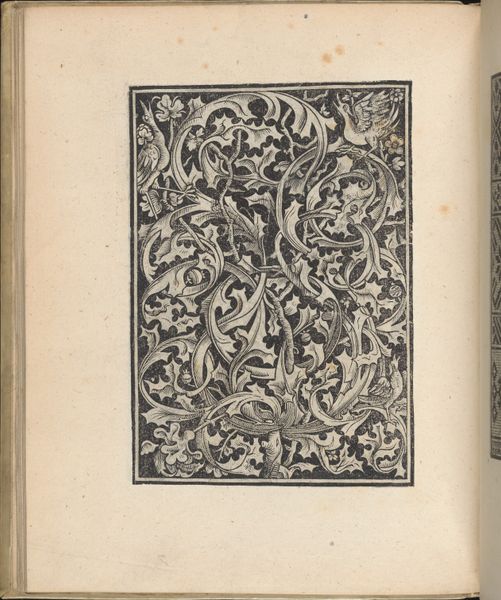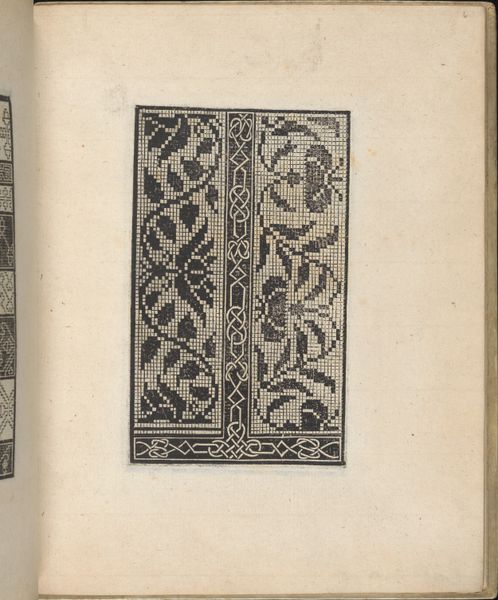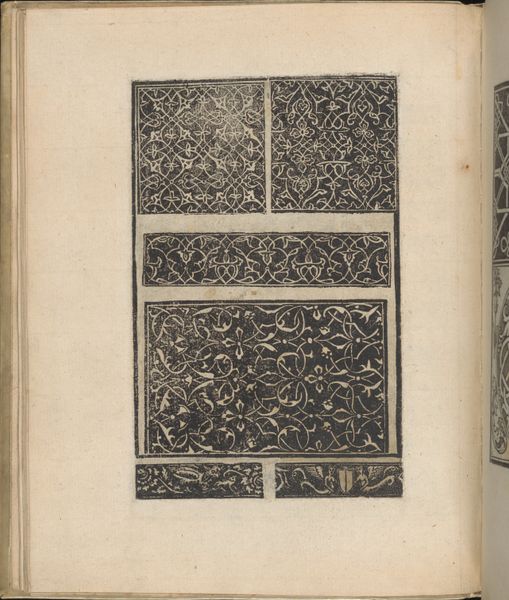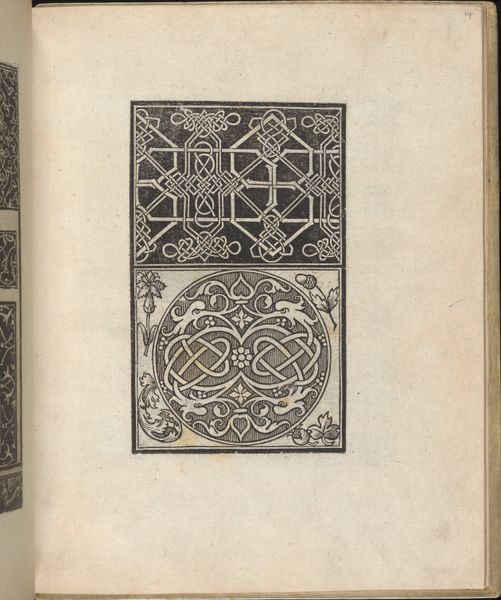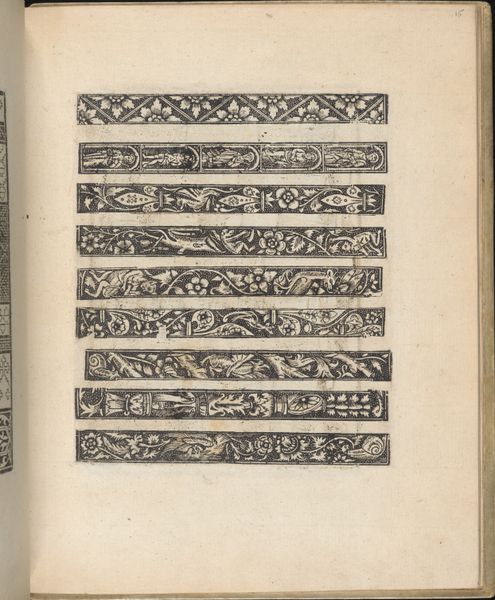
drawing, print, paper, woodblock-print, woodcut
#
drawing
# print
#
paper
#
11_renaissance
#
woodblock-print
#
geometric
#
woodcut
#
line
#
islamic-art
#
decorative-art
Dimensions: Overall: 12 x 8 5/16 x 1/4 in. (30.5 x 21.1 x 0.7 cm)
Copyright: Public Domain
Curator: Look at this striking page from Francesco di Pellegrino's "Livre de Moresques," dating back to 1546. It’s a woodcut print, an intricate dance of lines on paper. Editor: It's immediately arresting. The bold black shapes weaving across the page create a powerful sense of contained energy. It's a design that hints at something much larger than its physical form. Curator: Absolutely. What’s interesting is how these books of moresques were utilized. They functioned as pattern books, disseminated to workshops to inform design production in various mediums, particularly textiles and other decorative arts. This speaks volumes about the mechanics of artistic influence at the time. Editor: Yes, the function here speaks volumes about circulation of design, but on an iconographic level, the weaving and looping of those arabesque forms creates such an interesting visual paradox. Is it order or chaos? Restraint or boundless freedom? Those types of questions really allow the symbolic potential to explode. Curator: The print displays that aesthetic so popularized by Islamic art. You see echoes of that same visual vocabulary in architectural details from the same period. The Livre's significance resides, I think, in the translation and dissemination of such visual languages to different audiences. It suggests a more integrated transcultural reality in 16th century Europe than we might assume. Editor: Transcultural exchange yes, but it's still hard for me to disassociate it from its symbolic weight, that constant push and pull between form and feeling. What I love, particularly, is that, though geometric, these arabesques never feel cold or mechanical. Curator: Perhaps it's in part due to the hand-hewn process of a woodblock, you see some variation in line. It has not yet succumbed to mass production and there remains this very human touch in these design books. Editor: I agree, those variations offer a certain life. Looking at it, I feel like I could trace my own emotions through those intertwining vines, mapping the flow of energy itself. Curator: It truly shows us how something meant as an artistic sourcebook can become quite powerful. Editor: Definitely! What a window into not just 16th century design, but enduring aesthetic fascination.
Comments
No comments
Be the first to comment and join the conversation on the ultimate creative platform.
